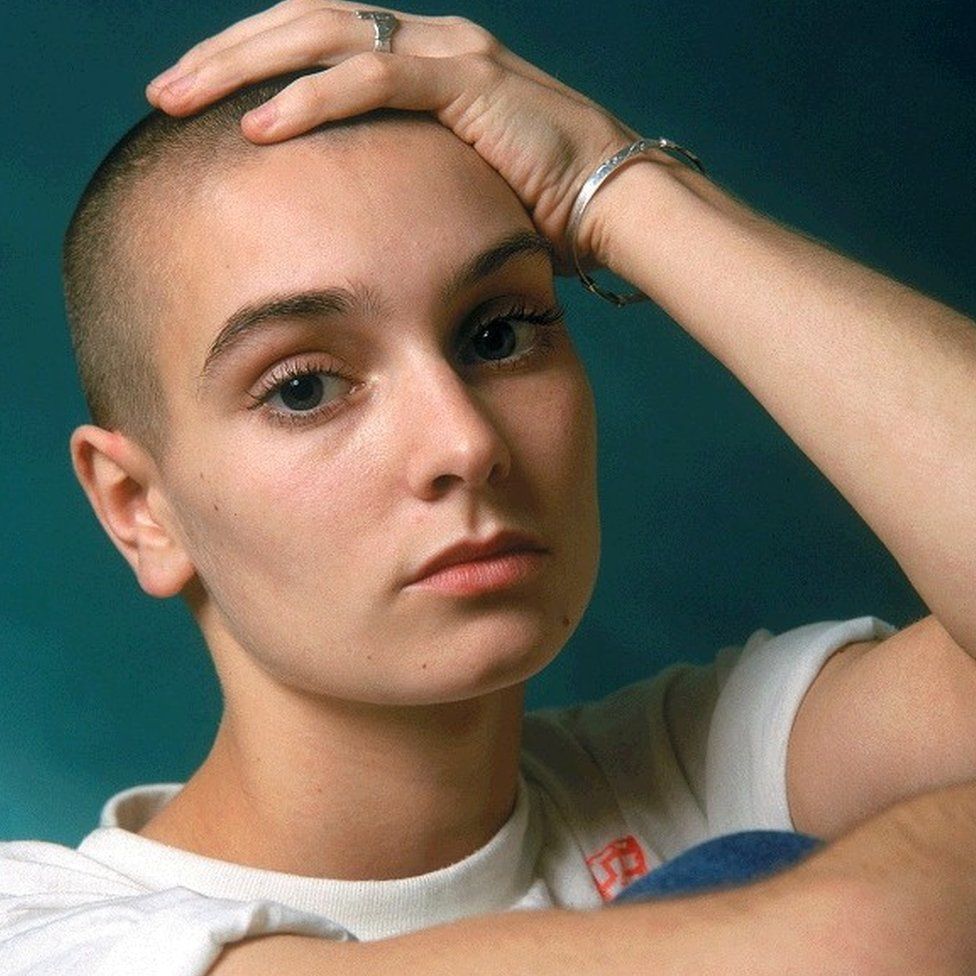- Sinéad O’Connor was booed off stage at a concert and a pile of her albums were crushed by a steamroller after she tore a photo of the Pope on TV. Despite the backlash, she never regretted doing it
Irish singer Sinéad O’Connor, known for her stirring voice and 1990 chart-topping hit Nothing Compares 2 U, has died at the age of 56, Irish media quoted her family as saying.
Known as much for her activism and outspoken views as for her music, one of her most famous acts of protest was ripping up a photo of Pope John Paul II live on television.

Why did Sinéad O’Connor rip up a picture of the Pope?
O’Connor tore up the picture during a 1992 appearance on United States television comedy show Saturday Night Live.
She performed a rendition Bob Marley’s War, with some lyrics changed to reflect child sexual abuse in the Catholic Church.

Sinead O’Connor at the 31st Annual Grammy Awards at the Shrine Auditorium in Los Angeles in 1989. Source: AP / AP
At the end of the song, she held up a photo of Pope John Paul II, declaring: “Fight the real enemy,” and then ripped up the photo as she stared into the camera.
At the time of her protest, John Paul II had not yet acknowledged sexual abuse within the Church.
O’Connor’s criticisms of Catholicism were especially controversial in parts of Ireland but also a brave representation of a shift that was taking shape in society away from the Church, whose deep influence began to collapse later that decade over a string of clerical child sex abuse scandals.
Broadcaster NBC and Saturday Night Live had not been told of her planned protest.
When O’Connor finished singing, the audience fell silent, and the executive producer reportedly ordered that the usual ‘applause’ sign – directing the in-studio audience to clap – not be used.
O’Connor’s protest attracted heavy criticism from other artists and members of the public, with the NBC receiving thousands of complaint calls.
When actor and musician Joe Pesci, who is Catholic, opened the show the following week, he criticised O’Connor and said if he ran the show, he would have given her “such a smack”. His comments were met with applause.
When O’Connor performed at a Bob Dylan tribute show at New York’s Madison Square Garden two weeks later, she was booed off the stage.
She had been scheduled to sing Dylan’s I Believe In You, but instead performed Bob Marley’s War.
And a few days after that, the National Ethnic Coalition of Organizations — now known as the Ellis Island Honors Society — hired a 30-ton steamroller and crushed a pile of O’Connor’s albums in front of the New York office of Chrysalis Records in retaliation.

A steam roller destroys albums by Sinéad O’Connor in New York in October 1992. Source: Getty / Allan Tannenbaum
Rolling Stone senior writer David Browne described the backlash, along with another incident where she was boycotted for refusing to have US national anthem The Star-Spangled Banner played at one of her shows, as “over the top”.
“These things seem like, in retrospect, kind of harmless. But the backlash that she got to both of those things really was, which was so over the top,” he said.
“And it did make you think like, you know if a male rock star did that at the time when he would he have effectively been banished from the music business the way she was. And I’m not sure he would have.”
Browne said O’Connor was one of the most complex musicians of all time.
“Sinéad O’Connor was definitely one of the most complex pop and rock stars, maybe -maybe of all time, certainly the last couple of decades,” he said.
“She’s someone who on one hand was an actual genuine star, you know, both in her look, her voice, everything about her. Yet, she was clearly so conflicted about it.”

O’Connor converted to Islam in 2018 and changed her name to Shuhada Sadaqat but continued to perform under the name Sinead O’Connor. Source: Getty / Tim Mosenfelder
O’Connor told the New York Times in 2021 she was “not sorry” she tore up the photo but admitted the backlash was “very traumatising”.
In her 2021 memoir Rememberings, O’Connor wrote: “Everyone wants a pop star, see?”
“But I am a protest singer. I just had stuff to get off my chest. I had no desire for fame.”
Who was Sinéad O’Connor?
Sinéad Marie Bernadette O’Connor was born in the affluent Dublin suburb of Glenageary on 8 December 1966.
Brash and direct – her shaved head, pained expression, and shapeless wardrobe a direct challenge to popular culture’s long-prevailing notions of femininity and sexuality – she irrevocably changed the image of women in music.
She was best known for her mesmerising version of Nothing Compares 2 U, originally written by Prince and accompanied by a music video in which she faced directly into the camera and cried.
She moved to London in 1985 and her first album, The Lion and the Cobra, earned her a Grammy Award nomination.

O’Connor was sent to a reform school for girls but left in her mid-teens to focus on a career in music, after co-writing a song for Irish band In Tua Nua. Source: EPA / Jean-Christophe Bott
Track six on her follow-up album, I Do Not Want What I Haven’t Got, catapulted O’Connor to global fame and earned her four more Grammy nominations – and a win for best alternative music performance.
O’Connor shunned the ceremony in protest at the “false and destructive materialistic values” of the music industry.
She released two more albums in the early 1990s and several more in the 2000s while publicly sharing her struggles with mental health illness.
Her teenage son died by suicide last year.
O’Connor converted to Islam in 2018 and changed her name to Shuhada Sadaqat, though continued to perform under the name Sinéad O’Connor.
Her death was announced on Wednesday.
“It is with great sadness that we announce the passing of our beloved Sinéad. Her family and friends are devastated and have requested privacy at this very difficult time,” Ireland’s national broadcaster RTE quoted a statement from the singer’s family as saying.
The circumstances of her death were unclear.





